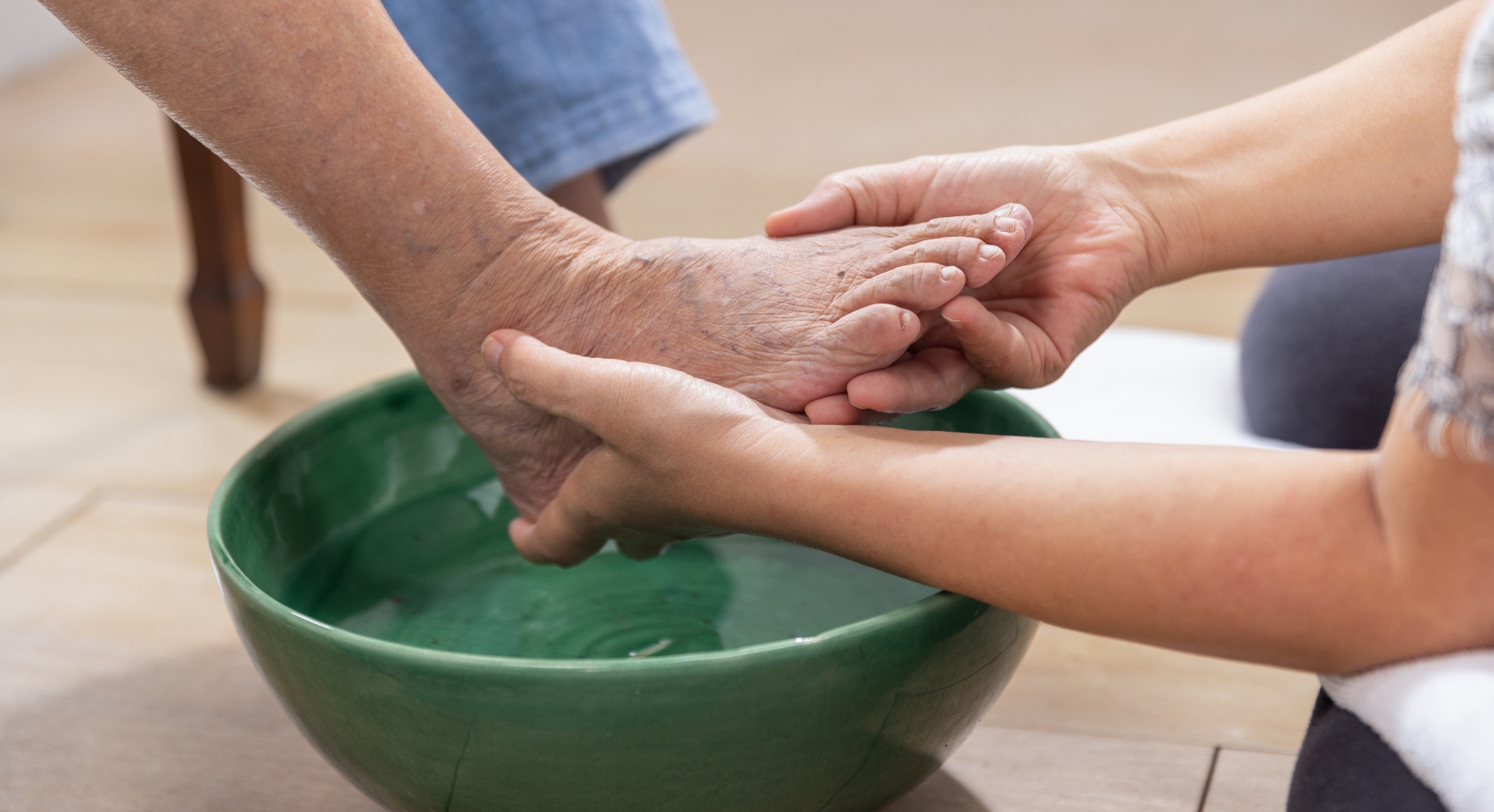Daily Care of Diabetic Foot Ulcers

Daily care for diabetic foot ulcers, in addition to following the general principles outlined below as treatment and daily guidelines for patients, should also pay attention to specific wound care considerations. The following will further elaborate on these points:
Daily care for diabetic foot ulcers, in addition to following the general principles outlined below as treatment and daily guidelines for patients, should also pay attention to specific wound care considerations. The following will further elaborate on these points:
- General Principles of Treatment: Early detection and early treatment.
- Local treatment and care: Offloading, debridement, promoting circulation, and correct medication.
- Self-management (regular ankle reflex, examination for conditions like foot vascular wall sclerosis).
Links
New Opportunity in the Lives of DFU Patients:Blood Sugar Control, Dietary Nutrition, and Exercise
The Power of Self-Care for Feet:Practical Tips for Preventing DFU

Diabetic patients are prone to foot ulcers due to neuropathy, atherosclerosis, arterial hardening, and decreased immunity. To effectively prevent the occurrence of foot ulcers, it is essential to engage in proper foot care, undergo regular examinations, and address arterial hardening. Early detection and prompt medical attention are crucial.
The Diabetes Association of the Republic of China (Taiwan) recommends the following foot care for patients with neuropathy:
-
Daily care for DFU patients includes the following guidelines as part of the treatment and daily principles. Pay attention to specific wound care considerations.
-
Wash the feet daily with warm water and mild soap, avoiding soaking the feet. After cleaning, gently dry with a soft towel, paying careful attention to drying between the toes.
-
Conduct a self-examination of the feet and toes twice daily to check for calluses, injuries, blisters, redness, swelling, corns, or signs of infection. For those with limited mobility, a mirror on the floor can be used to inspect the soles of the feet.
-
Check if the skin on the feet is dry. If needed, apply moisturizer to keep the feet hydrated, avoiding application between the toes.
-
Trim the toenails regularly, ensuring they are cut straight across horizontally. Avoid cutting too deeply, and use a file to smooth any sharp edges.
-
Avoid activities that could potentially harm the feet, such as walking barefoot or exposing the feet to high temperatures.
-
Always wear shoes to prevent injuries. Choose socks made of pure cotton or other breathable materials without tight seams. For those with foot deformities, consider wearing wider or deeper shoes, and individuals with neuropathy or symptoms like redness, warmth, or calluses should opt for walking or athletic shoes to alleviate foot pressure.
-
Before wearing shoes, inspect the inside for any damage, sharp edges, or foreign objects that may cause skin injuries.
-
Conduct a detailed foot examination at least once a year.
To prevent diabetic foot problems, it is recommended to quit smoking and control blood sugar and blood pressure level. Those with symptomatic peripheral vascular disease should undergo
structured exercise therapy, and if necessary, vascular reconstruction surgery. In case of foot ulcers, seek immediate treatment from a specialist, perform wound debridement, and analyze
the causes of infection, circulation issues, and delayed wound healing for appropriate medication.
For diabetic patients prone to foot ulcers, early prevention is crucial to avoid unfortunate incidents. Once there is a history of wounds or amputations, the likelihood of recurring ulcers
significantly increases.
(Photo credit: ShutterStock)
-
Reference:
- 台灣糖尿病周邊神經病變臨床指引。社團法人中華民國糖尿病學會,2017
